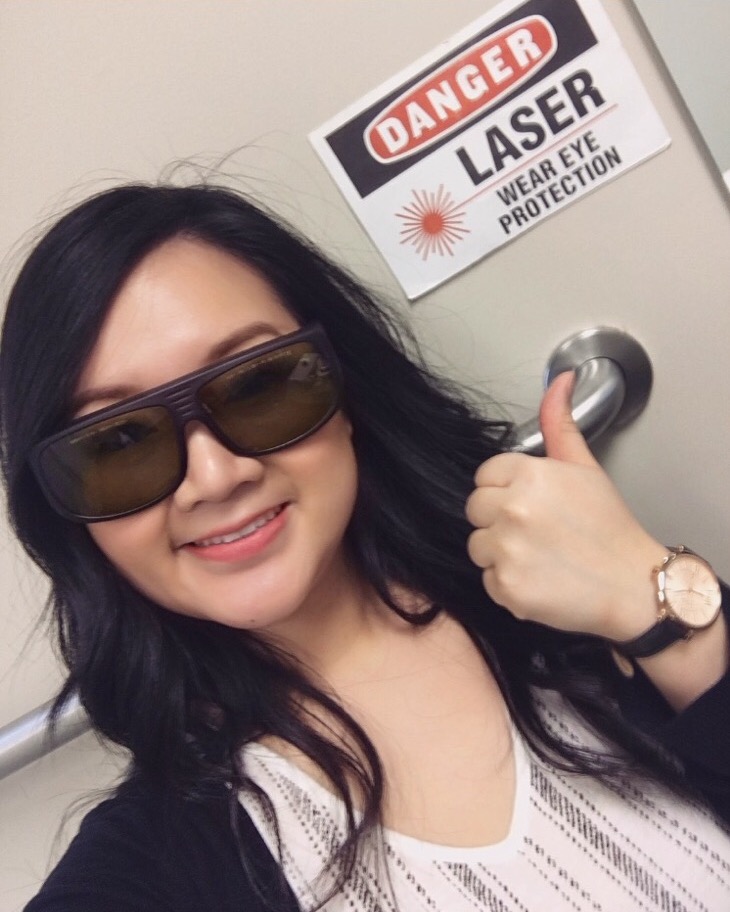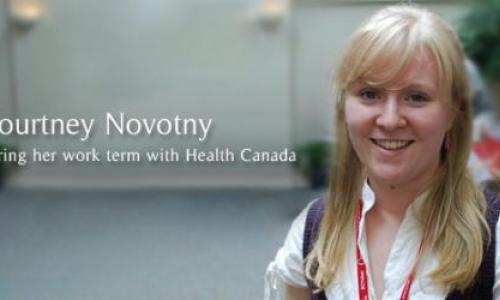
When I landed my first ever co-op placement as a Chiropractic Assistant and Laser Technician at Performance Health Group (PHG), I was absolutely excited and curious about what to expect. What exactly would my role as a Laser Technician involve? How do lasers assist chiropractors? What is spinal hygiene and what has it got to do with rehabilitation? And, as a student who hadn’t yet tackled my anatomy and physiology courses, how would I fair? After a reassuring week of training, I would find the answers to these questions while on the most proactive and engaging educational journey of my undergraduate career!
Laser Therapy and Chiropractic
The first few thoughts that may run through your mind when you hear the word “laser” may range from cutting and engraving, to hair removal and eye surgery, or the flashy lights at music festivals. I soon learned just how beneficial laser therapy could be for acute and chronic injuries, and its growing popularity in chiropractic and rehabilitative clinics.
Laser therapy is a non-invasive form of low-level light therapy that improves your body’s natural healing processes through photobiomodulation. Photobiomodulation involves the absorption of light photons in deep tissue, which stimulates a cascade of cellular mechanisms that improve tissue regeneration, reduce scarring, pain, and inflammation, and prevent further tissue damage (Hamblin & Demidova, 2006). This being my first time administering laser therapy, it was surprising to learn that something as simple as guiding a laser probe over the treatment area could have such profound results. The laser therapy allowed the chiropractors to better manually manipulate soft tissue and is a great complement to regular chiropractic treatments.
My laser sessions with patients were also the moments I put my anatomy knowledge into practice. This was when I would discuss with the practitioner which treatment protocol to use, and which anatomical areas to focus on. I would also record clinical chart notes indicating which areas I treated and the progress of the laser treatments. These were times where I both challenged and integrated my academic and practical skills. As mentioned, I was not the most well versed in functional anatomy so I was really put to the test. Rest assured, I was surrounded by resources to guide me, in the form of anatomy posters, readings, web databases, and most importantly, the chiropractors. Overtime, with practice, some independent study, and the guidance of the chiropractors, I became more familiar with anatomy and medical abbreviations. Recording chart notes was no longer a daunting task and I no longer had a fear of not immediately knowing a body part.

You may know hygiene as the practice of maintaining health and cleanliness—especially related to your teeth and hands. Well, the same applies to your spine and overall musculoskeletal system! The key to maintaining good spinal hygiene is treatment and prevention, and for the musculoskeletal system in particular, this means diagnosing and treating existing injuries and preventing future damage by eliminating flaws in everyday movements that may cause stress on your spine, bones, and surrounding tissues (McGill, 2015). Spinal hygiene isn’t just about the spine itself, it is also about the maintenance of the muscles, tendons, and soft tissue surrounding and interconnecting the human motor systems.
At PHG, my approach to encouraging spinal hygiene involved demonstrating different take-home exercises and stretches to patients as prescribed by the chiropractor as well as educating them on the “what” and “why” of each exercise. As you shouldn’t stop brushing your teeth after you go to a dentist to get a cavity filled, you also shouldn’t stop exercising and practicing good functional movement and posture after a chiropractic treatment. I reinforced this thinking by walking each patient through the major muscle groups we were targeting and how the exercise is activating these muscles to strengthen, stretch, or mobilize the area of concern. Their understanding of the benefit of each exercise contributed to the success and maintenance of their treatments. In turn, I also learned a lot about different types of injuries and their effects on a person’s range of motion and muscle strength. Patients who waited too long for a treatment or stopped incorporating exercise into their daily activity often experienced some regression in their progress. Throughout my co-op, I could see the difference that regular chiropractic treatments and exercises made in alleviating these effects and their importance in maintaining good spinal hygiene.
Future Thoughts
My experience at PHG showed me the many different types of therapies and treatments in chiropractic, such as deep tissue laser therapy and maintaining spinal hygiene through chiropractic treatment and proper exercise. I learned that laser therapy is a great complement to all forms of rehabilitative treatments and maintaining good spinal hygiene is important to prolonging the benefits of each treatment. Overall, I understand the importance of an interdisciplinary approach to rehabilitation and being able to modify and refer patients to other forms of therapies rather than sticking to one type.
My experience at PHG has also reinvigorated my passion for the human body and its motor systems. Being surrounded by wildly intelligent and welcoming people fostered my growth to become a more proactive and confident kinesiology student. I believe a regular academic course inside a classroom would not have given me the same experience, and because of this, I encourage all prospective co-op applicants to give co-op a try. Nothing feels better than being able to practically apply your learning!
References
Hamblin, M.R., & Demidova, T. (2006, February 10). Mechanisms of low level light therapy. Proc. SPIE, 6140, 1-12. doi: 10.1117/12.646294
McGill, S. (2015). Back mechanic: The step-by-step McGill method to fix back pain. Waterloo, Ont: Backfitpro Inc
Beyond the Blog
-
To learn more about opportunities like Jennifer's visit the Biomedical Physiology and Kinesiology Co-op homepage.
-
For more information on PHG, visit their website!















